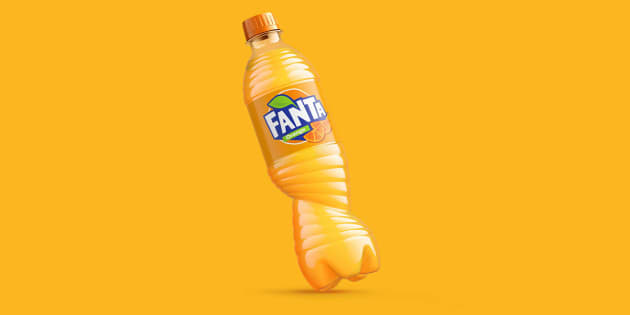The Coca-Cola Company’s Fanta bottles have always been symmetrical in shape – until now.
The biggest brand after Coke, Fanta has seen a few bottle re-designs since it first appeared on shelves in the 1940s.
But the bottles have always had one thing in common – they’ve been symmetrical.
Previously it was held that with a carbonated drink, the bottle had to be symmetrical or it would bend due to the pressure.
The new spiral Fanta bottle isn’t symmetrical at all, however.
Inspired by the twisting of an orange to release the juice and flavour, it has a series of 'ribs’, with a torsion in the bottom half.
The concept of incorporating the "twist" or "squeeze" came about in a session hosted by London design agency Drink Works.
This new design process began back in 2012, when some markets found that the previous Fanta "splash" bottle had become something of a category standard and that Fanta no longer stood out.
By chance in 2015, an Italian colleague of Bentley’s, Marco Beggiora, was looking for a new bottle design, and the market was willing to do a small-scale, isolated market test, according to The Coca-Cola Company.
Within eight months, the spiral design was resurrected and on the filling line in Sicily.
During a sales volume comparison, the new bottle excelled and consumers loved it.
Since that very first pilot program, the design continued to progress, both from a brand marketing perspective, led by Delia Maloney, and from a packaging point-of-view, with expert Roger Moore working closely with local teams and bottlers to review the technicalities.
The new bottle also has an updated label which has been moved further up towards the neck of the bottle, taking it someway to align with Coke and Sprite.
It has the added advantage of no longer being placed where shelves, or stacking units, end up covering it.
Today, the bottle is sold in Italy, Poland, Malta, Serbia, Finland and Romania, with plans to expand production globally in the coming months.
The new bottles have been on shelves in the UK since April.







